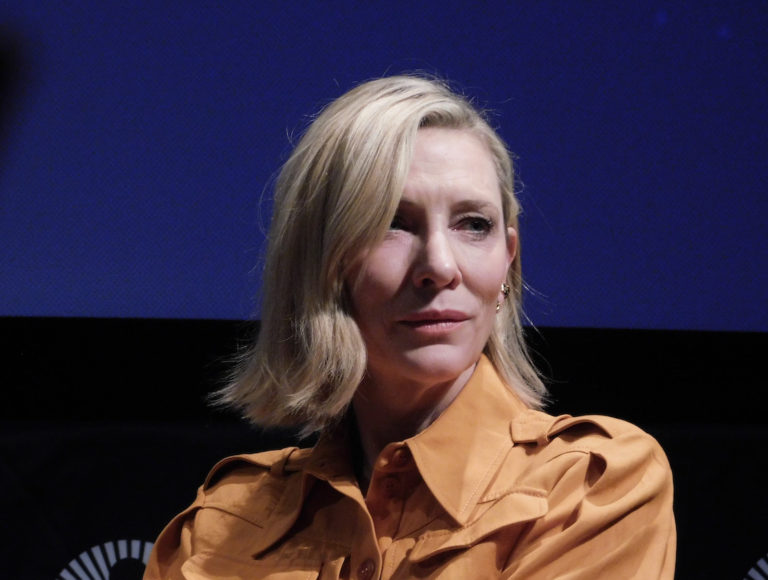
Press Conference with Actors Cate Blanchett, Sophie Kauer, Nina Hoss, director Todd Field, composer Hildur Guðnadóttir
Q: Todd, how did this film come about and what was its origin? It’s a vivid character study. The film also has a richly imagined world. And it has a lot of thematic resonance in terms of what’s going on in the world today. It also engages larger and more timeless questions. Was there a precise starting point for you?
TF: There’s some things I’d been thinking about for awhile. I’d had this idea for this character in a fashion for quite awhile. I was given enough rope to hang myself. Kiska Higgs and Peter Kujawski at Focus Features told me I could write anything I wanted to write. It was the beginning of the pandemic, right in March 2020, and I didn’t know if it really mattered if there’d be movies. We were all trying to survive, and people we knew were sick and dying. We were trying to think about how to get groceries and things like that.
So it came very quickly once I started. My background really is in jazz, but as Hildur will tell you, it’s all the same, it’s making noise. But in terms of trying to get the backdrop for this correct, that was very important to me. We’ve all seen movies about things that we say, “Well, that’s not probably how it is.” We’ve seen movies about movies and said, “No, that’s not really how you make movies.” So I needed to do a little homework.
Fortunately, the great John Mauceri, who’s a wonderful writer but also had been Lenny Bernstein’s assistant for many years, taught at Yale and has written several fine books that I would recommend — he was available. He gave me a crash course education over several weeks about what I should read and do, and answered practical questions for me in terms of things that I wanted to have happen or needed to have happen and if they were plausible or not.
Q: It sounds like the starting point was the character of Lydia Tár.
TF: Yeah, it was the character. That character was somebody in this case, who happened to be at the top of a power structure that was very clear and definable, how that pyramid works. But she could have been anything. She could have been the head of a multinational corporation or another arts foundation, or you-name-it.
Q: I’ve heard that you wrote the role for Cate. At what point did you speak to her, did you reach out to her? Was it with a finished script, or did you write the whole script with her in mind?
TF: I wrote the entire script with her in mind. She didn’t know that. I’ve told this story before, so I apologize for everybody who’s heard it up here. I had never written for an actor in mind, but I also hadn’t written an original script since I got out of film school in 1995. You don’t normally have the opportunity — in this case Peter and Kiska said write whatever you want. People don’t do that. There’s always IP attached.
When you’re adapting literary material, it’s often as a practical matter, best to keep these figures as literary figures in your head. If you’re thinking about an actor, it’s probably reductive from something you’ve seen them do before. Cate and I had talked about doing a film with Joan Didion many many years ago — 10 years ago. We’d met here in New York and it was a very meaningful meeting for me personally, just because of Cate’s intellect, her soul and her heart. The way that she looks at the narrative is very holistic, complete. I really wanted to collaborate with her. So for whatever reason, this is the first time I knew it was hers.
I put a Post-It note on my desk that said “Cate” and I would show up at my desk and say, “Good morning Cate,” and get to work. Three months later, I handed the script in and Peter and Kiska said, would you have anyone in mind for this role? I said, “No, absolutely, no. I’ve no idea who it is.” They said, well, have you thought about it? Should we send you some lists? I said no, no, I’m still thinking about it. I was very superstitious. Then finally my wife said, “You know, I think you’d better call Cate.” Then things happened very quickly. We got in a conversation immediately, and worked for nearly a year before we were actually on the ground together in Berlin.
Q: Cate, what was your response to the script?
CB: Well, like Todd said, we had this resonant, meaningful meeting a decade ago and I had forgotten that. Obviously I’ve been so altered by Todd’s films. It’s a rarity that he leaves home and goes and makes a movie, so it’s going to be a very considered event that he’s going to have. He doesn’t put himself out there unless has has something to say. I think that this film has so much to say. There’s so many questions here. I don’t think it really respects its audience, it asks far more questions than it answers.
I knew the process would be really exciting. I’d never read a screenplay like it. It was like a musical score — so rhythmic. Every character had their own rhythm and intonation and dynamics. I felt there was an aching, sort of metaphysical tragedy at the center of it that I didn’t know where to begin.
Our initial conversations were intensely practical because there was a lot that we both had to do in order to get to first base, to make the film, and for me to play the character. Once Todd started to assemble this amazing ensemble of people, you knew it had the chance to be something really special.
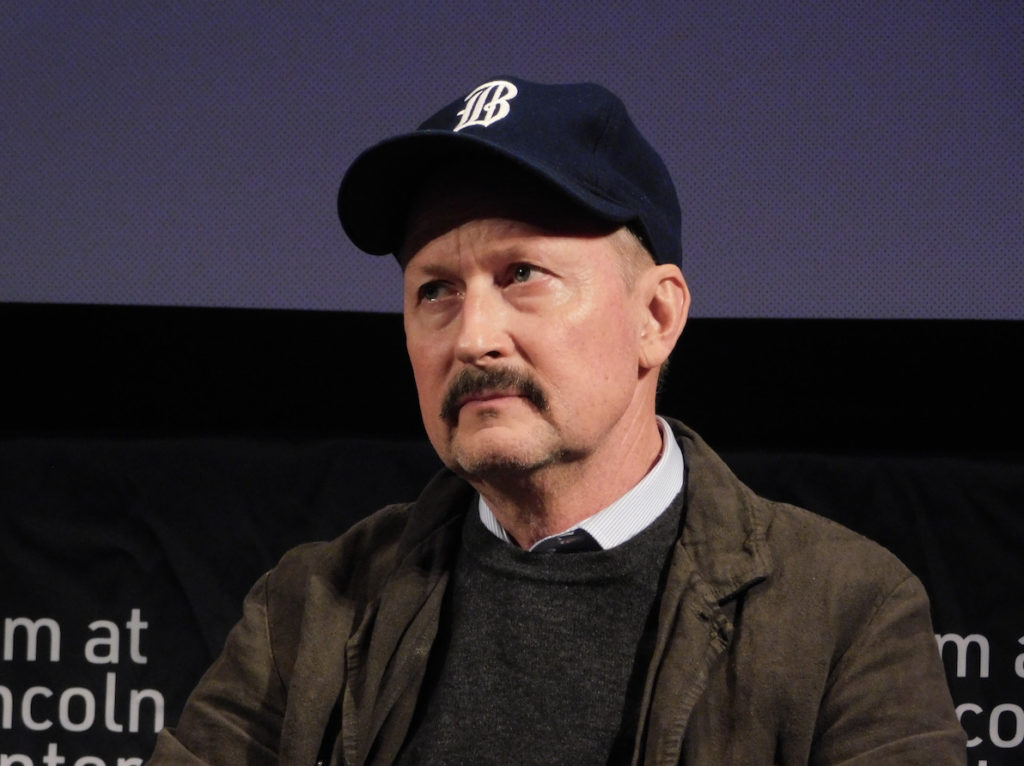
Q: Can you talk about some of that preparation? Todd talked about immersing himself in the details of this world. You obviously had to do quite a bit as well to play the part. I also noticed in the credits that you’re actually performing some of the music.
CB: Yeah. I was.
TF: All of it. All of it.
CB: I wasn’t doing the conducting, [it was] a lip synching version of it. I think, at its heart, every single element — is a testament to who Todd is, not only as a filmmaker but as a human being. As a human being, more than any filmmaker that I’ve ever met, he’s authentic with a capital “A.”
You were talking initially about the filmmaking style being fly-on-the-wall, that it’s obviously a rehearsal movie, it not a performance movie. We’ve all seen those movies about painters, writers, musicians, and you go, please don’t turn the canvas around because I know that you’re not really a painter. We didn’t want to do a version of it.
It was really important for me — and I’m sure it was with you two [to Kauer and Hoss] — you’re a musician, Sophie — that we had to be able to truly hold our own with the musicians who were asked to act, and, as actors, we had to become, as close as possible, musicians.
For me, it was through really turning Mahler’s Fifth Symphony inside out and listening to it, non-stop, 24/7 for a year, and all of his symphonies, influences, and all the people who have been influenced by him that I felt I could begin to approach the role. There was something contained within the symphony itself, and, in learning to read that score in a vertical as well as a horizontal way, I began to understand who she was and her terrifying magnificence. It was through the music.
Q: Cate, the ensemble is so important, as you mentioned. You learned so much about Lydia from all her relationships and interactions. The idea of Cate and Nina together is inspired and very exciting. It’s a pairing of two actors — obviously, you both have done a lot of film work, but you’ve also done a lot of theater. There’s a certain kinship in the work you’re both drawn to and in the kind of acting you do. Nina, talk about this pairing.
NH: Well, it was exactly that. It was so great. I know all her work, I couldn’t be sure she knew mine. So I was like, “Oh my god, I get to work with her!” It was so exciting already to see what she does with this character — to look into her eyes and see something’s happening. Every moment, every scene we do, something will happen, because we know what we’re looking for.
The way she works is exactly how I want to work and how I strive to do things. That’s so inspiring. She takes risks. She’s bold, and makes choices where you go, “Ahhh, uh-huh.” I was so inspired by her anyway, by her work, but especially when working with her. I truly hope this is not it. It’s wonderful that Todd had this idea.
CB: When Nina came on board, the creative conversation for me was so elevated by all of the elements that Todd brought to bear. I’ll say early on with Nina… When you came on board, the insight that you brought into Sharon’s complicity in maintaining the power structure that is “Tár” and the world in which Tár is able to operate really blew open a whole section of the film that I didn’t think I previously thought of before. It’s so great to work with an actor who is meticulous and inspired in the way that they create a role, but is also so invested in the Whole, not just their part within it.
Q: As you say, Cate, it’s a film that poses more questions than answers. There’s a lot of very productive ambiguity around the characters and their relationships. Was there a lot of conversation about backstories, motivations, histories and all those things? They’re not onscreen, but they’re all implied and submerged.
TF: We talked in fairly specific detail about backstory and about who these characters were. Specifically, when it came to Lydia and Sharon, [it was] about how they met, how they got together, what their romance was like and how they made decisions together. And mainly, [it was] about what covenant they had in terms of how they shared power and how power went back and forth between them.
Again, like Cate was saying, that was a very instantaneous wakeup call the first time I spoke with Nina. She said, “I want to do this, but there’s one scene here and I think maybe you might want to do this a bit differently.” That was the way she nicely put it. Out of that conversation was born many, many more between the three of us in terms of what is that relationship, how it functioned, and why is that relationship so important to the story.
NH: I was so inspired by working on the violin. Of course I had a lot of conversations with my teacher about Mahler like Cate had with her coach. You dive into that world. I started reading about his wife, Alma Mahler, because I thought that there might be something [there], and that’s what inspired all of us. I think this kind of thing is, always, who is the partner of a genius? There is a certain trait of a personality that’s not innocent — they want something from that partnership as well. I found all of that in the script that was there. But it was great that we could all work on getting it out a bit more.
CB: What they call in politics a “kingmaker”.
NH: Yeah. I’m not a kingmaker, but yeah.
CB: The kingmaker aspect, yeah. Queenmaker.
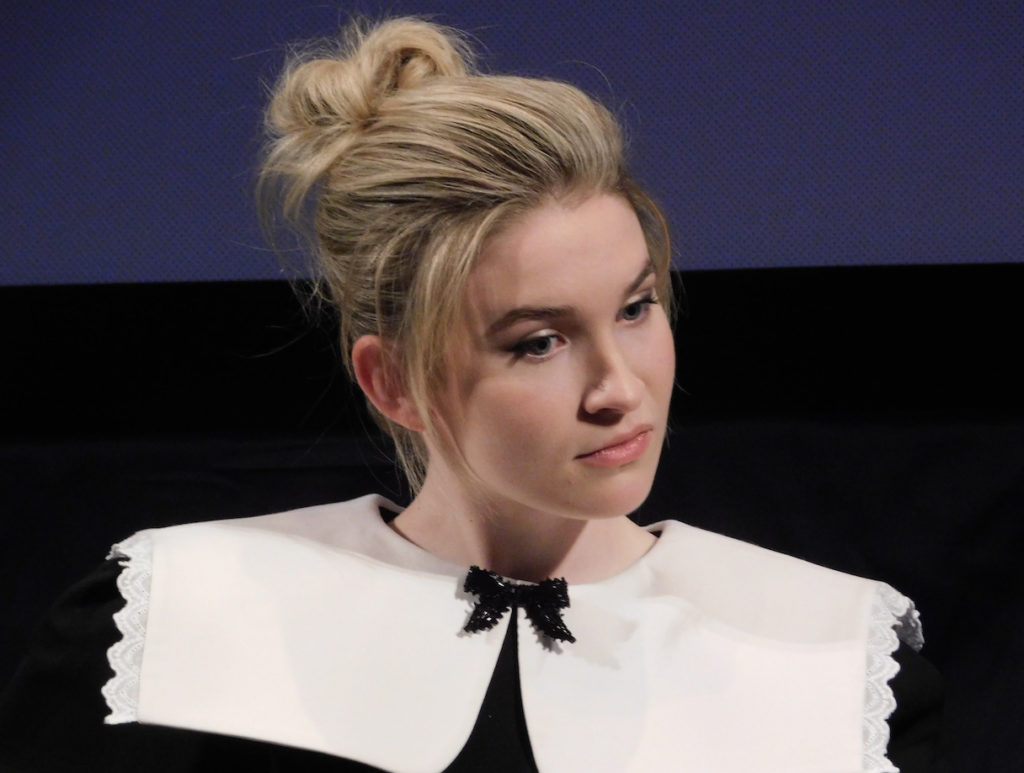
Q: Sophie is not Russian. Todd, can you talk a little bit about casting Sophie, and maybe, Sophie, you can say something about your experience working on the film. You’re a cellist?
SK: Yeah.
TF: It seemed like such a simple idea: everybody on screen that’s making music should actually be making music. While musicians and dancers, and anyone in the performing arts, these are sometimes very fluid, interchangeable disciplines because they require the same sensitivities and abilities having to do with sound and rhythm and things like that. It seemed like a very sensible idea that we’d be able to find this brilliant young cellist who was Russian.
Avy Kaufman and her assistant, Brigitte [Whitmire], took this on, and after months of looking at hundreds and hundreds of cellists, we hadn’t found anyone, for different reasons. We found a wonderful cellist. We found some people that could act. And then finally, we got desperate, because, as generous as Peter and Kiska were about the script, the casting budget was beginning to dwindle a bit and we had, I think, a week left.
Then this video arrived from the clouds and Avy said, “You might want to take a look at this. There’s this 19-year-old from Norway.” And there was this [indicates Sophie] Russian. I watched her play these scenes and they were top-notch. I said, “Maybe you might want to have her back. Does she play the cello?” And she goes, “Oh yeah, yeah, I think she plays the cello.” “Do you think you might be able to have her play an excerpt from the Elgar?” “Oh yeah, I’ll ask.”
Then the excerpt was like, “Ohhhh, wow! oh, amazing!” She came back in, and we had a callback and played with the scenes. Of course, the first question I asked her was, “Do you speak Russian?” She said “No.” I said, “Well, how did you do the accent?” She said, “YouTube.”
We got very lucky to make Sophie’s acquaintance and that she agreed to do this. It was a lot for her to take on. She’d never acted before, obviously. She had some fairly heady company, not to mention that she’s in a movie that is scored by one of the great living cellists and composers that we have. I think she’s pretty extraordinary in the film.
SK: Too lovely. I think you told it beautifully. I applied for it — it was actually my friend who made me apply. We got a casting call, and I think a school Facebook group or something like that. I’m really not active on Facebook. I’m getting better, don’t worry.
But a friend sent it to me and she was like, “You have to apply because I want to, and I don’t play the cello.” I was like, “Right, okay.” I had zero expectations the whole way through. I just thought, “Oh God, this is going to be so cool. I can tell my grandchildren I did a Zoom audition with Todd Field. How cool is that?”
Then I remember no one actually told me explicitly that I got the part. It was all like, “Oh, you’re at the top of a very short list” or “You’ve been approved by the studio.” I had no idea what that meant. Then Todd and Avy rang me to start introducing me to the script and Olga. I was like, “All right, have I got it? I’ve actually got the part?” She goes, “Yes!” No one was saying that. Anyway, it was amazing and then suddenly I found myself in Berlin surrounded by the greatest actors, directors and composers of all time. It’s been the best of both worlds. It’s really hard to say that any projects could top this one, to be quite honest.
Q: Hildur and Todd, maybe you could talk about your collaboration. It goes without saying, music is important in this film. Talk about what were your touchstones and what ideas developed as you shaped the score — both of you.
HG: Music is very important in this film, very, very important. I was so thrilled when Todd asked me to get involved, because it’s a rare opportunity as a composer to get to work on a process film about music. A lot of the time, as a composer, you’re often asked to underscore or you are highlighting emotions. You’re definitely ending up with the product of finished cues or finished pieces of music.
But in this case, we really got to dive into what it is to compose, what it is to listen when you compose, what it’s like to rehearse, to practice, to stray away from your creative alignment and get stuck in another world. There were just so many incredibly juicy aspects of the practice of composing and rehearsing music that it was such a privilege for me to dive into. That’s probably the part of music that I’m more interested in than the finished product.
Behind every piece of music that you hear, there’s decades of practice, decades of preparation to get to the point that you actually listen to. It’s like what happens in rehearsal when you’re rehearsing with a group of people, the journey that everyone goes through musically. Through music, you’re communicating beyond the words. So when you’re practicing with other people, it’s a form of transformational communication, and it’s very strong. In rehearsals, this is the point when you feel like everything is really coming together and the music starts to blossom. For me, that’s where the real beauty of music lies. It’s not the perfect take, it’s how you got there that’s so interesting.
In this case, Lydia Tár is not only rehearsing music, she’s also composing music, so then we’re looking at the process of how do we communicate the way of internally hearing the music before you write it? You have to feel it, so you don’t really hear it. When you’re writing music, you have these melodies or textures that you hear internally. So it’s not a voice, necessarily, or an instrument, but it’s a feeling of the music and how do you portray that visually in a way that you feel it?
It was really important for us to write that music really early on. Todd and I had lots of meetings before they started shooting. When he was location scouting, we tempo-mapped the whole film and made bpms [beats per minute] for each character with the tempo they were walking in, the tempo they were writing in, and the tempo they were rehearsing in. We had this overarching tempo map of the film. Then I wrote music to accompany that so we could all listen to that music and could hear that music so the music is in the delicate subconscious DNA of the film, even though the audience isn’t hearing [it]. Hopefully, they will feel the tempo.
Of course, I wrote the music that she writes in the film. We would have conversations about it. I would very badly try to explain how it is to compose, how it is to hear it and to sit with it, because it’s a very delicate and personal process that you don’t normally share that much with people. That was a really interesting and beautiful process for me as a composer, to get to share it with such beautiful artists.
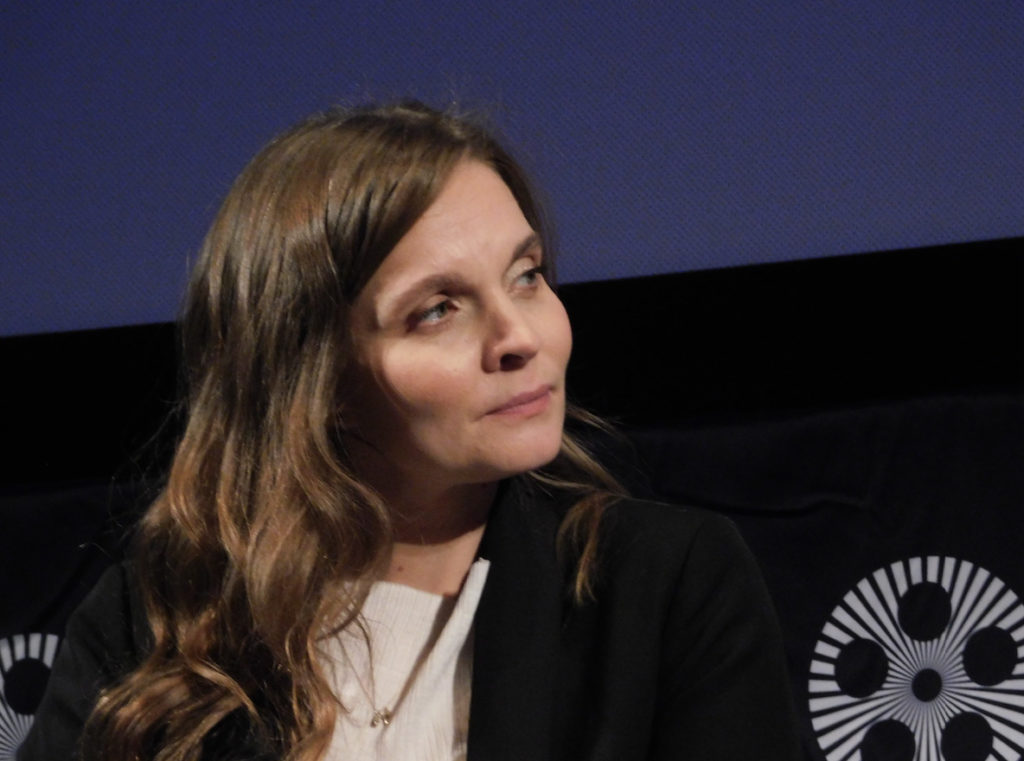
Q: Todd, do you want to add anything?
TF: Well, it was an unusual situation, as Sylvia said. Most of the time, there’s a pre-circumcised kind of situation. The process is a, b, c, d and e, “e” being you come in and the composer inherits your sins and tries to absolve you in a way. This was an unusual situation, and a gigantic creative opportunity in terms of being able to collaborate with Hildur. She was at “a” and was with us through the end. As she said, we didn’t just spot for cues, we spotted for what is the gait.
For instance, if you watch Cate and put a metronome on her, she’s walking at 120 beats per minute. But Sophie’s walking at 60. This contrast between her older and younger selves and creatively, where she is at, as opposed to, for instance, where Sophie’s character is.
We had in-depth conversations about how we relate to music, how we relate to sound, and the idea that you’re making a film about characters that make music. They make music for real and make it on screen. So to underscore their lives would be absurd and like putting a hat on a hat.
One of the things that I deeply admire about Hildur’s music — long before she was scoring — is the way that she makes very, very dense sonic scapes that work on you in a particular manner that’s non-equational. There’s a great deal of score in this film that’s probably, based on how we mixed it, but you’re unaware of. It’s there nonetheless, and there’s a real intent behind it all.
It was a gigantic luxury to have that kind of continuity of cooperation with a composer, and it was integral not just to our conversation, but to the conversation with Cate and what she was doing, obviously, all the way through into July when we actually recorded a concept album with the London Symphony Orchestra — Cate was conducting and Sophie was playing. [That was done] with Elgar in the same place where Jacqueline duPre plays Elgar, at Studio One at EMI, now Abbey Road. Hildur actually recorded with the full orchestra what Cate’s character is writing in the movie. That will be out on vinyl with Lydia Tár on the cover, the way she planned in January.
Q: Can you talk about the research that went into writing the younger characters and students?
TF: I don’t know. I have a lot of children. If you are referring specifically to the scene at Juilliard… I’ve always been haunted by this question: at some point in your life, you either ask yourself or someone else: if you could go back and talk to your younger self, what would you say?
For me, the impetus for that scene was that it was really about Lydia Tár talking to her 24-year-old self. The way I imagined this character — when she’s 24 she graduates from Harvard, and wants to break windows, to push boundaries. She wants to go make some noise, someplace outside of this Austro-German place that we find her at the age of 50 or turning 50.
CB: That was the first scene you wrote.
TF: That was the first scene I wrote. I think we’re at a very particular moment where generations are screaming at each other, and that’s not something new. It’s just that the language that people are using to scream at each other is new. For me, that scene was a test of patience between the young person and the older person, and the older person loses their patience first. They lose, right? In this case, Lydia Tár makes four attempts, and the younger person just says, “No, thank you” — and that’s not good enough for her.
Maybe it’s not good enough for her because we saw that at lunch, she didn’t eat enough and she has low blood sugar. Maybe she would have kept her powder dry another day. Maybe she’s anxious about something. She loses her temper and so ultimately she loses that conversation with her younger self — or in this case, this younger person.
There are people of all different ages and stripes in this film. There’s anywhere from her mentor, Andris, Julian Glover, who is 87 years old, to Allan Corduner who is in his 70s, to Lydia Tár who’s turning 50, her partner, who’s a contemporary of 50, the young cellist, Nina, who in the film is 19-20 years old, their daughter, Mila, who plays Petra who is six years old. To be sure, it’s a survey of different generations.
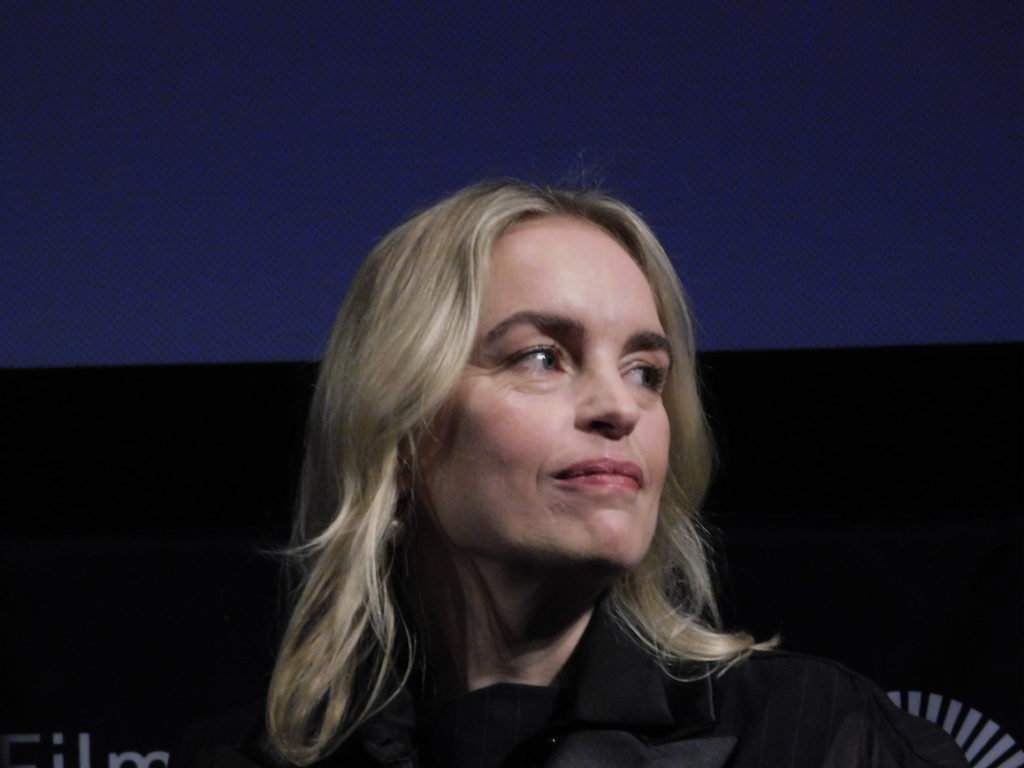
Q: How did you balance heavy topics like sexual scandals with keeping the film a character portrait?
TF: Those are just facts, right? That’s public — we read about that. In this milieu, those are the things that these characters would talk about, given these circumstances. But that’s just what’s in the air. People could argue — and I would argue — that it’s a fool’s errand to make a contemporary film that has the mentions of things that you’re talking about because it’s instantly dated. This is an unusual circumstance given the tempo in which this film was written and made. But the things with Dutoit and Levine and others, those really rocked the classical music world and are un-ignorable. You manifest things that in such a conversation, one of those characters would bring up.
Q: Did the pandemic influence your return to making movies?
TF: I don’t know. It’s a fair question, a question that I seem to be answering a lot.
SK: And it’s a request that a lot of people have, Todd. Please don’t take so long.
TF: I love movies so much. I love making movies. That’s why we’re all here, hopefully. I obsess over films and small details, and write my own critiques of other people’s films. It’s a really hard thing to be away from that, and it’s a hard thing to be allowed to make a film.
I was a Fellow at the American Film Institute a hundred thousand years ago. We had a great teacher there and he was only there that year, a guy named Stuart Rosenberg. Stuart directed “Cool Hand Luke.” He was a real solid, sturdy fellow, and had a lot of wisdom to impart, a very practical wisdom — that we all, of course, ignored. One of the things that he said was, “You can’t tour with your movie and explain it to other people.”
Of course he came from an era where you didn’t do that. The other thing he said was, “Enjoy your time here at the American Film Institute because it will never be any better. You have total freedom, and can experiment, and the stakes are as high as you want to make them. But you can do anything you want.” And he was right.
I’ve spent a very long time working on a lot of things that I thought were worth paying attention to that other people didn’t. It’s as simple as that. One of those things was this project where Cate and I met, so it was worth it. John and I spent a year working on that script that never happened, but if I got to collaborate with someone like Cate from that, then I’m the richer for it and it was worth every minute.
Check out more of Nobuhiro’s article.
Here’s the trailer of the film.

